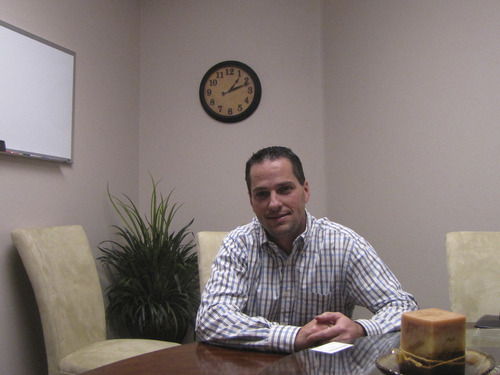This is an archived article that was published on sltrib.com in 2010, and information in the article may be outdated. It is provided only for personal research purposes and may not be reprinted.
St. George • A bad economy, population growth and easy availability of narcotic painkillers are contributing to a growing demand for mental health and substance-abuse treatment in St. George, according to treatment providers.
But options are not always available. Until recently, the only choices were state-subsidized programs operated through the Division of Substance Abuse and Mental Health, which serve only a portion of those needing help.
According to an annual report on substance abuse issued by the division, capacity of public treatment facilities in 2009 lagged far behind the need in southwestern Utah, which includes Beaver, Iron, Garfield, Kane and Washington counties.
That year, 6,034 residents in southwestern Utah needed some type of mental health help from a government treatment program, but the capacity of those programs was only 687. For youth ages 12 to 17, the gap was nearly as bad: 767 patients needed help, but there were resources for only 87.
One problem is that there were no private businesses to fill the gap between the city's volunteer clinics and state-sponsored programs administered by the county that serve Medicaid-eligible patients.
That's why Gloria Boberg, CEO of The Ark, recently opened a private, nonprofit facility in St. George that offers residential and outpatient services.
Boberg, who operates four other clinics in northern Utah, said she decided to move to St. George after consulting with health professionals in the area and learning of the growing demand. In addition to people with mental health issues, Boberg said her programs tackle addictions ranging from abuse of narcotics and alcohol to eating disorders to shopping addiction.
"If you're drunk or on drugs you can go to the hospital and get stabilized, but then you are on your own again with really no place to go to get the help needed," said Boberg.
Only patients with private insurance are treated now at The Ark, although Boberg doesn't rule out accepting patients covered by Medicare or Medicaid in the future.
Boberg said one problem she's seeing in St. George is abuse of prescription painkillers containing opiates that she believes are overprescribed by doctors.
"Just because it comes in a prescription bottle, many think there is no danger in addiction," said Boberg.
Brent Kelsey, assistant director of the Division of Substance Abuse and Mental Health, part of the Department of Human Services, said there is a crucial need for more facilities like The Ark in southern Utah.
"There is a feeling in some circles that if it [drug] is prescribed by a doctor, it's OK," said Kelsey. "Generally, the way I look at drugs and addiction is that they are driven by access and availability. We just have a lot of narcotic pain pills in the community."
DeeAnne Staheli, director of the Doctors Volunteer Clinic in St. George, which treats patients at no charge, says 30 percent of her patients have mental health and addiction problems. "It just keeps going up."
She believes the primary reason for the rise is the poor economy.
"The one reason I see for the stress, frustration and suicide [threats] are all related to the economy and lost jobs," she said.
She said The Ark is a welcome addition that fills a service gap in the community. "They're pricey but can allow [a patient] to be close to family, and that's good," she said.
To deal with the growing problem, Staheli said the clinic is trying to raise funds to build a special unit for mental health patients.
Michael Cain, associate director of the state-funded Southwest Behavioral Health Center, which primarily treats clients referred by the courts, said The Ark will fill a private-sector niche that has been underserved because similar facilities have come and gone.
Jeremy Boberg, the son of Gloria Boberg and director of the St. George office of The Ark, said he hopes the facility can make a difference.
"There is a tremendous need, especially for residential treatment," he said.
Free clinic sees increase
Between 2007 and 2010, the number of people seeking help at the free Doctors Volunteer Clinic rose from 8,916 to 11,500. During that time, the portion requesting help with a mental health problem rose from 24 to 27 percent.
Doctors Volunteer Clinic, St. George



